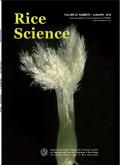稻壳分级多孔碳合成技术综述
IF 6.1
2区 农林科学
Q1 AGRONOMY
引用次数: 0
摘要
层次化多孔碳(HPC)材料由于其发育良好的多尺度互联孔隙结构,在各种应用中表现出优异的性能。近几十年来,用天然生物质前体代替化石燃料前体合成高性能聚乙烯获得了相当大的关注。稻壳是一种全球丰富的农业废弃物,为高性能pc生产提供了一种可持续的、具有成本效益的前体。稻壳的结构成分和固有的二氧化硅含量为形成具有优越特性的分层孔结构提供了天然的自模板。本文综述了近年来以稻壳为原料制备高性能塑料的研究进展,并对合成技术进行了评述。此外,综述了近年来在活化方法和二氧化硅模板效果方面的研究进展,并与传统的活性炭生产方法进行了比较。研究和发展活动的潜在未来方向也进行了讨论。稻壳是一种极具潜力的高性能高性能材料。本文章由计算机程序翻译,如有差异,请以英文原文为准。
A Comprehensive Review of Hierarchical Porous Carbon Synthesis from Rice Husk
Hierarchical porous carbon (HPC) materials exhibit superior performance profiles in various applications due to their well-developed multiscale interconnected pore structures. The synthesis of HPC from natural biomass precursors instead of fossil fuel-based precursors has gained considerable attention in recent decades. Rice husk, a globally abundant agricultural waste, offers a sustainable and cost-effective precursor for HPC production. The structural components and inherent silica content of rice husk act as a natural self-template for forming hierarchical pore structures with superior characteristics. In this review, recent studies on preparing rice husk-based HPC are summarized, and synthesis techniques are evaluated. In addition, recent advancements in activation methods and the effect of silica templates are reviewed while comparing these with traditional activated carbon production methods. Potential future directions for research and development activities are also discussed. Rice husk is a highly promising candidate for producing high-performance HPC materials.
求助全文
通过发布文献求助,成功后即可免费获取论文全文。
去求助
来源期刊

Rice Science
Agricultural and Biological Sciences-Agronomy and Crop Science
CiteScore
8.90
自引率
6.20%
发文量
55
审稿时长
40 weeks
期刊介绍:
Rice Science is an international research journal sponsored by China National Rice Research Institute. It publishes original research papers, review articles, as well as short communications on all aspects of rice sciences in English language. Some of the topics that may be included in each issue are: breeding and genetics, biotechnology, germplasm resources, crop management, pest management, physiology, soil and fertilizer management, ecology, cereal chemistry and post-harvest processing.
 求助内容:
求助内容: 应助结果提醒方式:
应助结果提醒方式:


